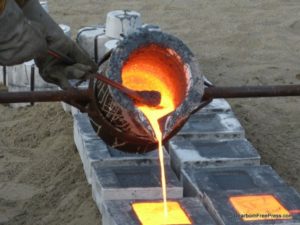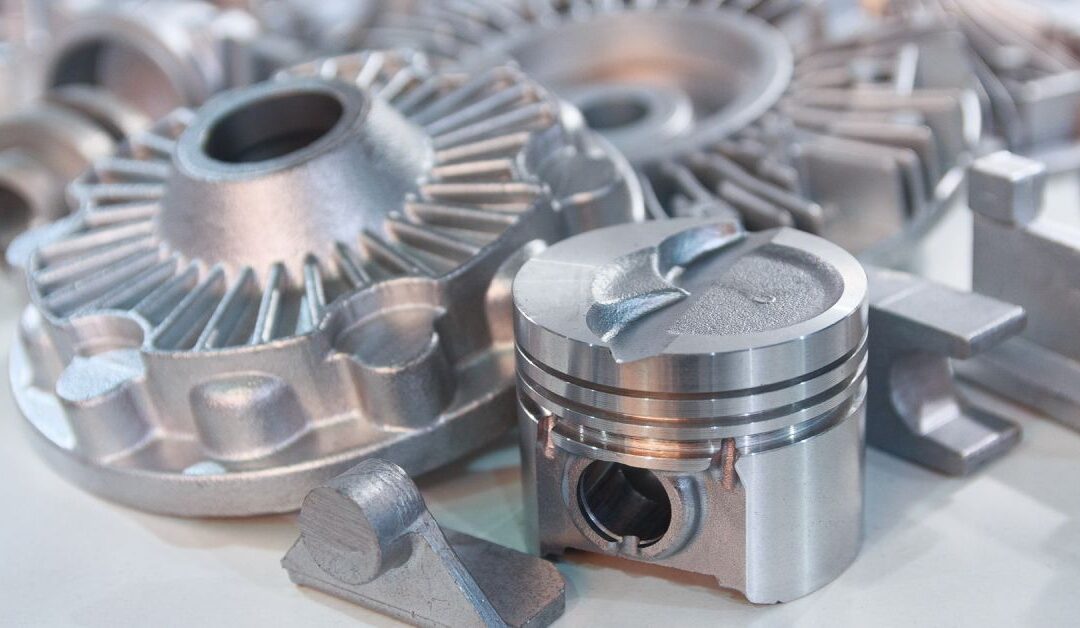Discover the versatile world of Aluminum Castings and their diverse industrial applications
Wiki Article
The Role of Metal Casting beforehand Manufacturing Technologies
Metal Casting have actually notably influenced the development of manufacturing technologies. They supply one-of-a-kind layout adaptability, enabling the production of detailed geometries crucial for various applications. Modern spreading techniques are being enhanced by technologies like 3D printing and automation. These developments not only boost efficiency however additionally address challenges in precision and sustainability. As sectors continue to evolve, the function of Metal Casting stays important fit their future. What lies ahead in this vibrant field?The Evolution of Steel Casting Strategies
As the need for precision and efficiency in manufacturing has expanded, the advancement of Metal Casting strategies has actually undertaken substantial change. Historically, Metal Casting began with simple methods such as sand spreading and lost-wax spreading, which enabled craftsmens to produce intricate forms. Gradually, innovations in modern technology presented procedures like die spreading and financial investment spreading, improving accuracy and lowering waste. Aluminum Foundry. The introduction of computer-aided design (CAD) and simulation software program transformed the drawing board, enabling makers to expect possible issues and optimize layouts prior to manufacturing. Furthermore, the advancement of brand-new materials, such as advanced alloys and composites, has actually widened the range of applications for Metal Casting. Automation and robotics have further polished casting processes, improving uniformity and performance. Because of this, the Metal Casting sector has actually adapted to fulfill the demands of contemporary manufacturing, concentrating on sustainability and development to continue to be affordable in an ever-evolving industry
Applications of Metal Casting in Key Industries
The advancements in Metal Casting strategies have actually opened up a large variety of applications throughout numerous sectors. In the vehicle market, Metal Casting are indispensable for generating engine blocks, transmission housings, and various other crucial components that require high stamina and longevity. The aerospace industry utilizes spreadings for intricate parts like wind turbine blades and architectural components, making certain lightweight yet durable options for airplane.
The building and construction industry utilizes Metal Casting for structural aspects such as fittings and light beams, adding to the stability of structures and facilities. In the energy sector, castings play an essential function in producing elements for wind generators and power generation tools, enhancing performance and reliability. In addition, the medical field benefits from precision spreadings utilized in medical instruments and prosthetics, demonstrating the adaptability of Metal Casting across varied applications. This broad utilization highlights the value of Metal Casting in contemporary manufacturing practices.
Advantages of Metal Casting in Modern Manufacturing
Metal Casting use various advantages that greatly enhance contemporary production processes. One crucial benefit is style flexibility; Metal Casting permits the creation of complex shapes and intricate geometries that are usually hard or impossible to accomplish with various other producing approaches. This capacity makes it possible for makers to maximize item layouts for functionality and performance.In addition, Metal Casting can support a large array of products, consisting of iron, aluminum, and steel, which can be customized to fulfill specific mechanical residential properties and corrosion resistance requirements.

Cost-effectiveness is one more significant benefit; Metal Casting processes can create huge quantities of components with marginal material waste, thereby lowering production costs.
Furthermore, the longevity of actors steel components contributes to the long life of items, decreasing the requirement for frequent replacements. On the whole, the benefits of Metal Casting considerably contribute to effectiveness, sustainability, and development within modern-day production settings.
Developments Driving the Future of Metal Casting
While typical Metal Casting strategies have actually served the sector well for years, recent innovations are poised to change the field. Advancements such as 3D printing innovation permit for quick prototyping and the production of complicated geometries that were formerly unattainable. These developments not only enhance style adaptability however additionally decrease waste and shorten lead times. On top of that, the integration of automation and robotics in casting procedures is enhancing procedures, improving precision, and enhancing employee security. The advancement of composite products and new alloys is making it possible for the creation of stronger, lighter spreadings customized for certain applications. Digital modern technologies, including man-made intelligence and maker discovering, are maximizing casting criteria and predictive upkeep, driving better quality assurance. Jointly, these advancements are pushing the limits of Metal Casting, fostering higher effectiveness and sustainability in manufacturing, and placing the market for future development and competitiveness.Challenges and Solutions in Metal Casting Processes
As advancements in Metal Casting technology remain to reshape the sector, various obstacles stay that manufacturers have to resolve to fully take advantage of these developments. One substantial issue is the variability in material properties, which can result in irregular quality and efficiency. This variability usually results from fluctuations useful site in raw products and handling conditions. In addition, the increasing prices of power and products pose financial restrictions, pushing producers to seek extra reliable processes.To fight these challenges, companies are significantly adopting automated systems and advanced visit the website simulation techniques to improve accuracy and consistency. Executing high quality control measures throughout the manufacturing process additionally aids in detecting problems early. Investing in research for alternate materials may reduce costs and improve sustainability. By attending to these difficulties with cutting-edge options, the Metal Casting industry can improve productivity and maintain competitiveness in the developing production landscape.
Frequently Asked Inquiries
What Products Are Frequently Made Use Of in Metal Casting Procedures?
Typical materials utilized in Metal Casting processes include light weight aluminum, magnesium, iron, and bronze. Each product has one-of-a-kind residential or commercial properties that deal with various applications, enhancing the versatility and performance of the last actors items in various industries.Just How Do Ecological Rules Effect Metal Casting Workflow?
Ecological policies compel Metal Casting operations to take on cleaner innovations and methods, commonly enhancing manufacturing costs. Conformity might bring about innovative procedures that reduce waste and emissions, inevitably advertising sustainability within the Metal Casting market.What Are the Security Measures in Metal Casting Facilities?
Precaution in Metal Casting facilities include correct air flow, individual safety equipment, normal safety training, equipment maintenance, and adherence to safety and security guidelines, ensuring a protected setting for workers while minimizing risks connected with hazardous materials and procedures.Exactly How Is Quality Controlled in the Steel Casting Process?
Quality assurance in Metal Casting entails rigorous evaluations, including aesthetic analyses, dimensional checks, and material screening. Adherence to industry standards and implementing quality administration systems guarantees that spreadings satisfy specific demands throughout the manufacturing process.
What Is the Future Task Overview for Metal Casting Professionals?
The future task outlook for Metal Casting professionals appears encouraging, driven by improvements in modern technology and boosting need across various markets (Aluminum Foundry). Development in automation and lasting techniques will likely create brand-new opportunities in this sectorHistorically, Metal web link Casting started with easy approaches such as sand spreading and lost-wax spreading, which permitted craftsmens to create intricate shapes. Over time, developments in modern technology introduced procedures like die spreading and financial investment spreading, enhancing precision and reducing waste. In enhancement, the medical area advantages from accuracy spreadings made use of in surgical tools and prosthetics, demonstrating the convenience of Metal Casting throughout varied applications. Metal Casting use many benefits that greatly enhance modern manufacturing procedures. Typical products utilized in Metal Casting procedures consist of aluminum, bronze, magnesium, and iron.
Report this wiki page